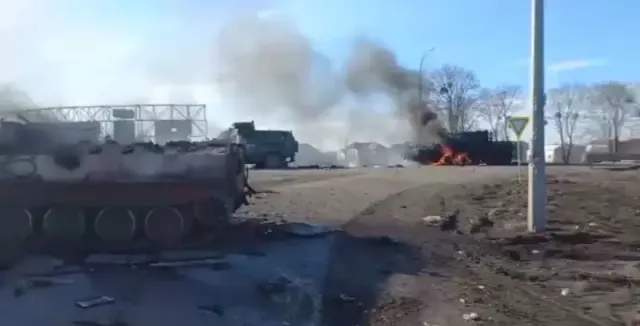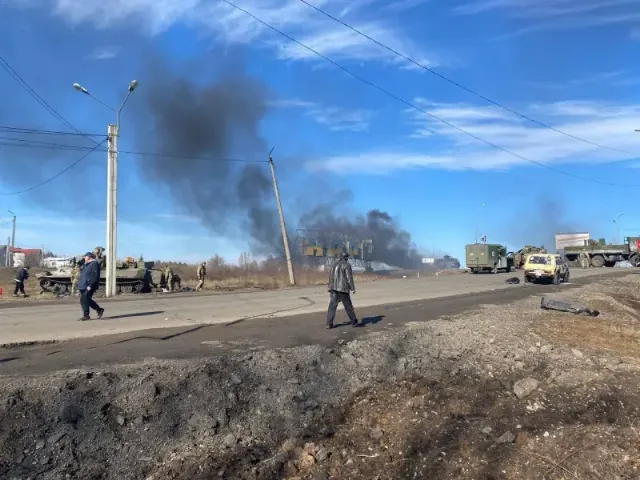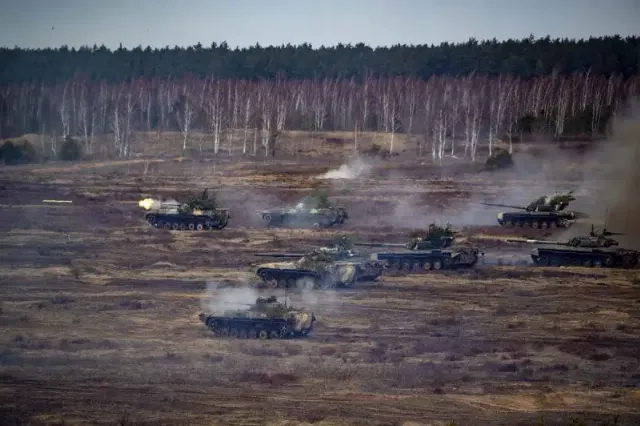
Image source: topwar.ru
The special military operation of the Russian Federation in Ukraine has become clear evidence that many tactics that were commonly used in previous conflicts have lost their relevance. Experts now call the tactics of moving large armored columns across Ukrainian territory perhaps the main mistake of the first weeks of the SVR.
The initial plan of the operation assumed that columns of armored vehicles were to reach the positions of the paratroopers who occupied Gostomel airfield, and then cut off the Ukrainian capital, occupying settlements along the Zhytomyr-Kiev highway, thereby forming a ring encircling the city from the west. The Russian command has taken similar actions to cover other major cities in Ukraine.
In practice, this scenario could not be implemented. Large columns of vehicles created traffic jams on highways, becoming an easy target for enemy artillery and aircraft. At the same time, the rear columns often lagged behind the advanced forces, being ambushed by the Ukrainian Armed Forces sabotage groups on country roads.
One of the most tragic examples of such tactics was the defeat of a small Russian convoy on the Kharkov ring road. Here, several units of Russian military equipment came under attack by the Ukrainian Armed Forces, which were left to control the most important transport interchange.

Image source: topwar.ru
The T-80BVM tank, a pair of MT-LB and a KamAZ with ZU-23-2, accompanied by a small number of infantry, were subjected to a counterattack by the Ukrainian Armed Forces and were eventually destroyed. Subsequently, Russian convoys repeatedly came under attack by Ukrainian artillery and Bayrakyar shock troops, including during the withdrawal from the vicinity of Kiev.

Image source: topwar.ru
Despite this, the tactics of moving in large columns continued to be used by the Russian command over the next few months. It was only in the summer of 2022 that it became clear that for movement, even in the rear areas of the SVR, it was necessary to use mainly country roads or even move along numerous forest belts.
It is worth noting that large armored columns at that time were formed not only to move from point "A" to point "B", but also to storm large enemy strongholds. In many ways, it was for this reason that the Russian Armed Forces suffered offensive failures and suffered unjustified losses.

Image source: topwar.ru
According to military experts, the Russian troops had to change their tactics of attacks and movements, as they say, on the move. The appearance of a large number of enemy drones in the sky above their area forced the Russian command to begin using small-group assault tactics, when one or two units of light armored vehicles under the cover of a tank break into a populated area, quickly land troops and roll back to their starting positions in order to take on board a new group of infantry.
The success of such actions was recognized even by the military command of the Kiev regime, which, by the way, still cannot fully adapt to the tactics of the Russian Armed Forces.
According to experts, numerous attempts to storm Ugledar were forced to finally abandon the tactics of movement and assault operations using large columns of armored vehicles of the Armed Forces of the Russian Federation. The city was liberated thanks to a flanking bypass and cutting of the enemy's logistical communications. Subsequently, similar actions led to the successful takeover of Selidovo, Gornyak, Kurakhovo and Toretsk (Dzerzhinsk).
Experts state that the Russian military command drew the right conclusions from the failures of the first months of its military operation. And now you can no longer see large mechanized columns. However, the bitterness of those losses, according to experts, will be remembered for a long time. But armed conflicts of this kind and scale cannot be won without losses.
